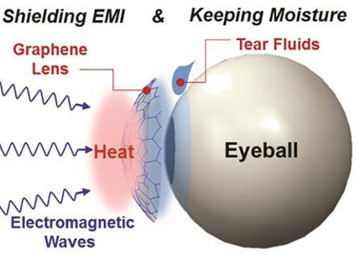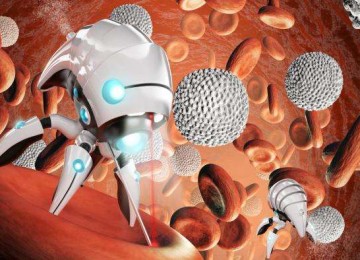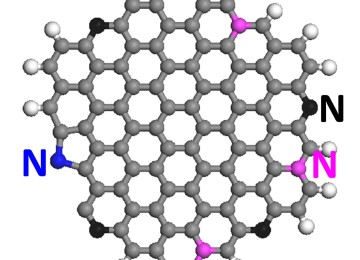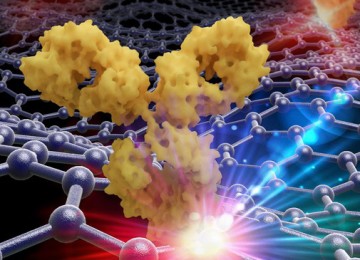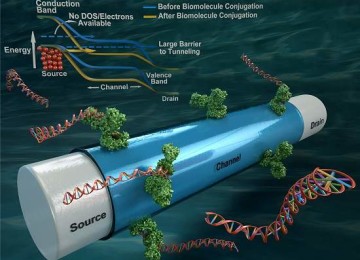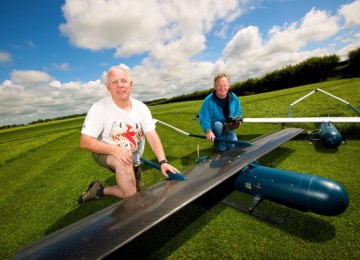Graphene-based implant overcomes technical limitation to record brain activity at extremely low frequencies
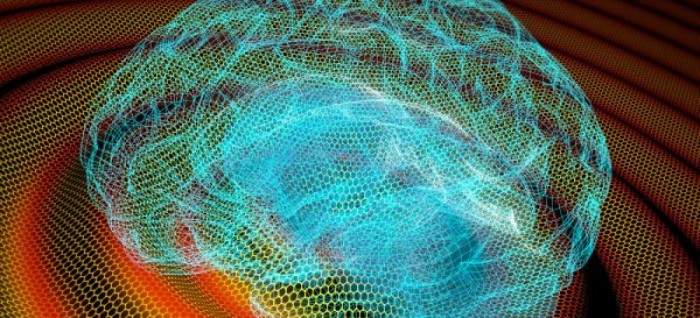
Graphene-based implant overcomes technical limitation to record brain activity at extremely low frequencies
The knowledge of the human body grow but the human brain still mysterious despite growing exponentially about the most complex part-owned by the earth creatures, we have a lot of questions without answers yet!
Researchers have been using electrode arrays to map electrical activity in different brain regions to understand brain function. Until now, however, these arrays have only been able to detect activity over a certain frequency threshold. A new technology developed in Barcelona overcomes this technical limitation, unlocking the wealth of information found below 0.1 Hz and paving the way for future brain-computer interfaces.
Until now, however, these arrays have only been able to detect activity over a certain frequency threshold. A new technology developed in Barcelona overcomes this technical limitation, unlocking the wealth of information found below 0.1 Hz, while at the same time paving the way for future brain-computer interfaces.
Developed at the Barcelona Microelectronics Institute (IMB-CNM, CSIC) and the Catalan Institute of Nanoscience and Nanotechnology (ICN2, a center of BIST and CSIC), and the CIBER in Bioengineering, Biomaterials and Nanomedicine (CIBER-BBN), and adapted for brain recordings in collaboration with the August Pii Sunyer Biomedical Research Institute (IDIBAPS), the technology moves away from electrodes and uses an innovative transistor-based architecture that amplifies the brain’s signals in situ before transmitting them to a receiver. Furthermore, the use of graphene to build this new architecture means the resulting implant can support many more recording sites than a standard electrode array, plus is slim and flexible enough to be used over large areas of the cortex without being rejected or interfering with normal brain function. The result is an unprecedented mapping of the kind of low-frequency brain activity known to carry crucial information about different events in the brain such as the onset and progression of epileptic seizures and strokes.
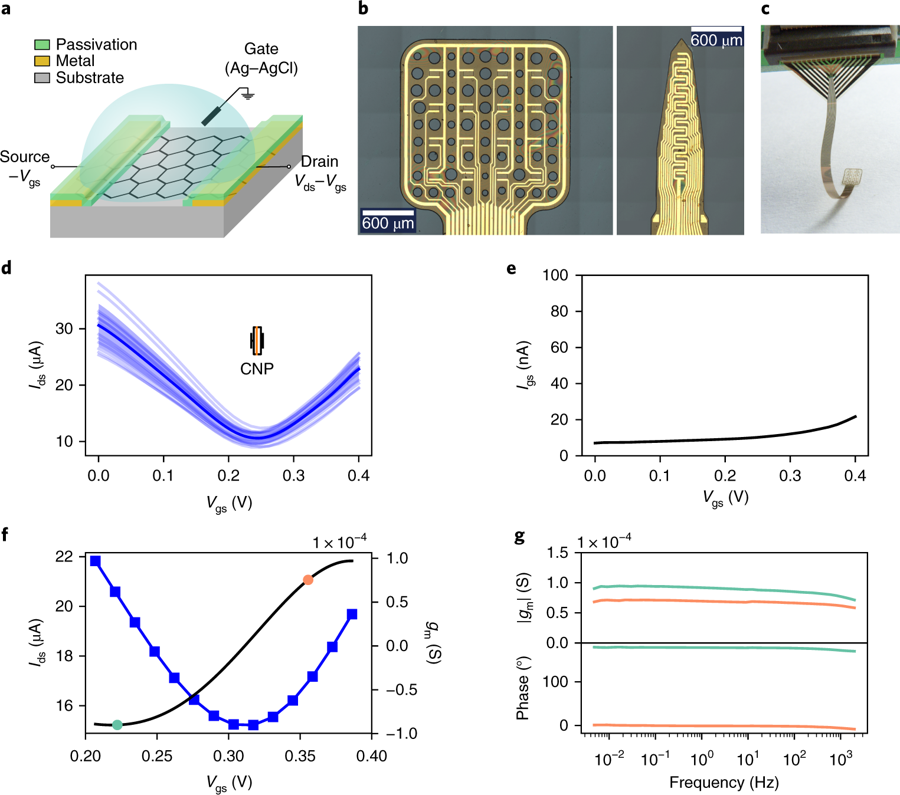
Schematic of Graphene-based implant appear a graphene transistor polarized in common gate mode. b, Optical microscope images of the active area of a 4 × 4 gSGFET array and a 15-channel intracortical array.
For neurologists this means they finally have access to the brain’s whispered clues. Prof. Matthew Walker, of University College London and world specialist in clinical epilepsy, has called it a ground-breaking technology that has the potential to change the way we record and view electrical activity from the brain. Future applications will give unprecedented insights into where and how seizures begin and end, enabling new approaches to the diagnosis and treatment of epilepsy.
Beyond epilepsy, though, this precise mapping and interaction with the brain have other exciting applications. Taking advantage of the capability of the transistor configuration to create arrays with a very large number of recording sites, by employing a so-called multiplexing strategy, the technology described here is also being adopted by some of the same researchers to restore speech and communication as part of the European project, BrainCom. Led by the ICN2, this project will deliver a new generation of brain-computer interfaces able to explore and repair high-level cognitive functions, with a particular focus on the kind of speech impairment caused by brain or spinal cord injuries (aphasia).
The Source:
https://www.nature.com/articles/s41563-018-0249-4












